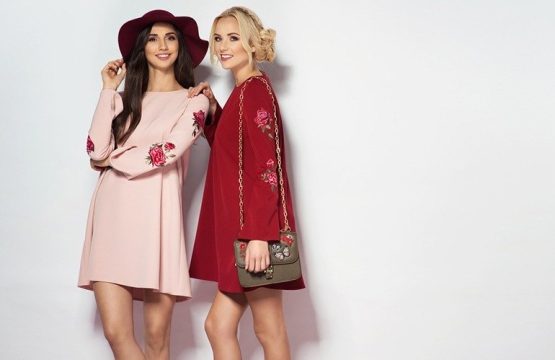- You have no items in your shopping cart
- Continue Shopping

Every iconic brand has an origin story. A clothing line that may dominate today’s department stores may have started as a small business run out of a fledgling fashion designer’s living room. While launching your clothing line is challenging, thanks to eCommerce and online marketing, it just might be possible to turn a brand that began in a small online store into a clothing brand that’s beloved nationwide.
3 Essential Things to Consider Before Starting a Fashion Brand
From Donna Karan to Vera Wang to Paige Adams-Geller, the great fashion designers aren’t just visual talents: they are also driven, entrepreneurs.
- Starting a clothing line business takes tremendous sweat equity.
- Challenges will undoubtedly arise, particularly if it’s your first time starting a business.
- This doesn’t mean you shouldn’t follow your passion. If you know your home is in the fashion industry, you owe it to yourself to do everything possible to make your clothing line a reality.
How to Start a Fashion Brand in 10 Steps: Step-by-Step Guide
The great brands of the clothing industry weren’t cobbled together in a piecemeal fashion. Even when trial-and-error was involved, these brands almost certainly followed a business plan and continued to scale at a sustainable pace. Use this step-by-step guide as a way to help structure your own business model.
Be prepared for peaks and valleys as you embark on your clothing business journey. Starting a new company from scratch is never easy, but it’s certainly possible. Remember that all of today’s iconic brands got their start somewhere.
- Identify a need in the market. A successful clothing line won’t succeed on the vanity of its founding designer. Think about a niche in the market that isn’t currently being filled. Is it a t-shirt that can be worn on formal occasions? Is it a line of hoodies that flatteringly accents someone’s curves? Figure out what product should exist that isn’t currently being offered by a major clothing company.
- Develop a business plan. This will guide your entire journey as a fashion designer and clothing manufacturer. Ask yourself: what is my ultimate goal for this product? Do I want to be a brand name sold in Nordstrom and Macy’s? Do I want to create a private label brand for a company like Target or H&M? Do I want to create a premium brand that’s sold in a boutique on Melrose Avenue in LA or SoHo in New York City? Identify your goal and keep it foremost in your mind as you build your brand.
- Identify your target audience. This step is almost concurrent with number one. Your objective is not simply to identify a clothing item that should exist, but also the target market of consumers for that product. After all, brilliant design is of little use if it lacks potential customers. Consider the pros and cons of targeting certain demographics. For instance, young people tend to be style-conscious and may be more receptive to online marketing and word of mouth, but they also may have limited funds. Middle-aged customers may be able to afford a higher price point, but they may be less concerned with style and already loyal to an existing brand identity.
- Start designing. Presumably, this is your forte, and so this is your chance to creatively shine. The first collection you release to the market will say a great deal about you as a designer, so make sure you are crafting something that you’d be happy to use as your calling card going forward. At the same time, think practically. Whatever you’re designing will have to be produced in a cost-effective manner. Being a successful fashion designer is always a blend between the ideal and the attainable.
- Find a clothing manufacturer. Unless you plan to source, cut, and sew all your materials by yourself, you will need a manufacturing partner. This can mean any number of things. Perhaps you’re simply seeking colleagues who can help you make clothing in a home studio. Perhaps you’re looking for a fabric supplier. Perhaps you’re looking for a fully humming factory that can produce a limited supply of your boutique goods alongside mass-produced items from an established brand. For decades, clothing manufacturing has been based outside of the United States. Therefore it’s quite possible that your search for a manufacturer will lead you to a country like China, Vietnam, Sri Lanka, or Bangladesh. You may want to travel to see the factory in person, but for new designers on a budget, the entire vetting process will have to be done via phone and email. If your fashion goals are less ambitious—such as a new logo printed atop existing streetwear or casual wear—you may be able to manufacture your goods locally, such as at a nearby print-on-demand screen printing facility.
- Choose a brand name, logo, and market profile. If it looks as though your clothing items can be manufactured with reasonable production costs, you’re ready to start planning your public profile. This means picking a business name, a logo, and a slogan if necessary. It means designing a website with an ecommerce platform like Shopify or Etsy. Customers like brands with a compelling story, so weaving that into your brand name, logo, or website will also help. This work should be completed by the time the manufacturing process runs its course. This way you are ready to sell your goods as soon as they are made.
- Choose a price point for your items. This step ties into identifying and understanding your target audience. Choose a price point that will cover your production cost but that doesn’t alienate the customers you will need to launch your fashion business.
- Begin the marketing process. At this point, your new business needs brand awareness. Instagram has become a popular platform for this, and many Instagram influencers are happy to promote new fashion brands in exchange for products.
- Set realistic sales and distribution goals. Don’t be afraid to partner with a business professional to embark on this step. Just because you have a fashion vision doesn’t mean that you know about clothing distribution. If you can hit your sales goals, you can continue to grow, as per your business plan.
- Start a soft launch, and then look for more investment and partnerships. Once you have a proof of concept—clothing that you can sell in limited quantities—you’re ready to loop in potential business partners and co-investors. Yes, it would be nice to own your business outright and keep all of your future profits. But as most business owners start to scale up, they need access to capital. Taking on a business partner who can provide that capital in exchange for a cut of future proceeds is the most traditional way to do this.
Want to Start Your Own Brand?
Whether you’re starting our own business or a veteran CEO looking to brush up on the basics, understanding the ins and outs of people management, team building, and effective workplace communication can make all the difference between a successful business venture and an unsuccessful one. No one knows this better than the legendary Anna Wintour, who has served as Vogue magazine’s editor-in-chief since 1988. In Anna Wintour’s MasterClass on creativity and leadership, the current Artistic Director of Condé Nast provides her distinct and priceless insight into everything from hiring and managing a successful team to how to best serve the right audience.
Want to become a better business leader? The MasterClass Annual Membership provides exclusive video lessons from business luminaries, including Anna Wintour, Diane von Furstenberg, Howard Schultz, and more.




